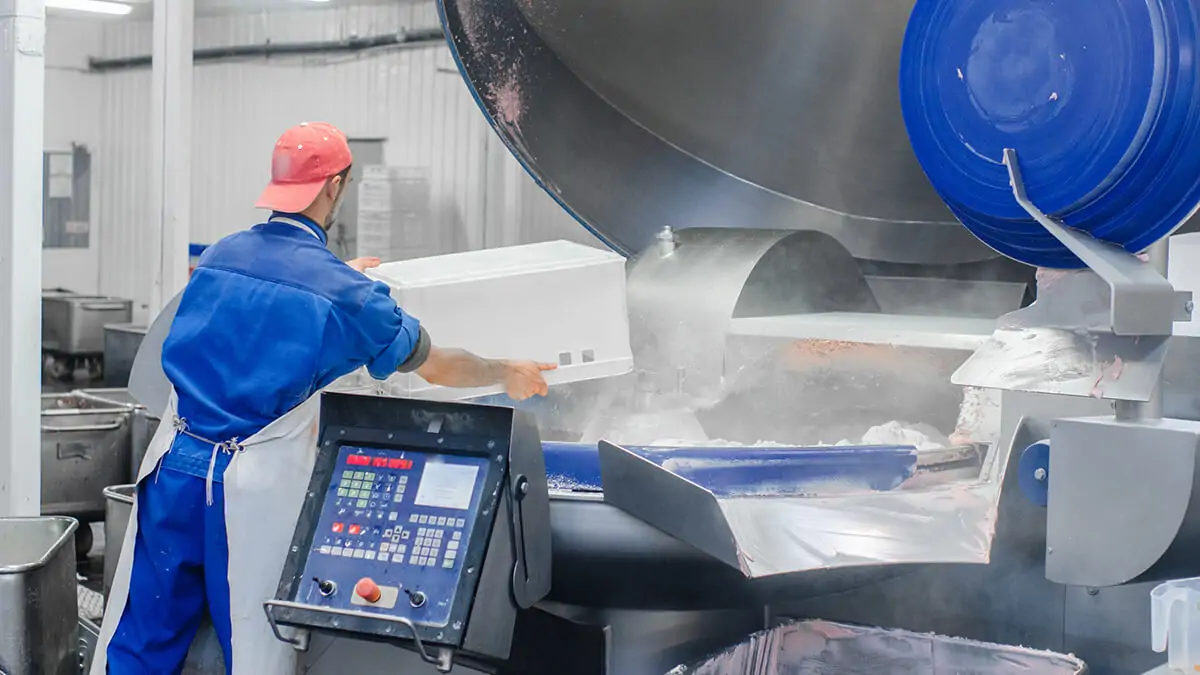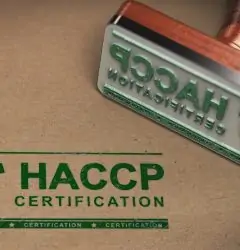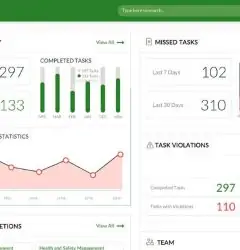31 Jul

The Hazard Analysis Critical Control Point (HACCP) is a science-based, systematic process developed for controlling systems for food safety. This provides a basic structure of a preventative system for safer production of meat products.
The preventative approach of this system appears to be its key to producing the safest meat for the consumers. It means that the potential chemical, biological, and physical food safety hazards that either occur naturally, contributed by the environment or forms due to a deviation in production processes, are eliminated, prevented, or minimized to a justifiable level for the production of safe meat products.
History of HACCP
HACCP became known when Pillsbury Company collaborated with the National Aeronautics and Space Administration (NASA), the U.S. Army Natick Laboratories, and the U.S. Air Force Space Laboratory Project Group in 1959 to ensure the use of food safety for the space program.
A system of analysis called ‘Modes of Failure’ was developed by Natick. The system became a common practice and has evolved since its introduction into this concept that we now know as HACCP.
HACCP was initially introduced in 1971 at the National Conference of Food Protection to the general public. As a result of a publication of a report by the National Academy of Sciences presented in 1985, ‘An Evaluation of the Role of Microbiological Criteria for Foods and Food Ingredients,’ the HACCP gained more popularity as a concept for food safety by the food industry.
USDA FSIS Final Rule
The Department of Agriculture Food Safety and Inspection Service (USDA FSIS) the United defined requirements to minimize the appearance and count of pathogens on poultry and meat products States on 25 July 1996. Their objective was to reduce the occurrence of foodborne illness caused by consumption of these products, and to develop a framework for evolving and improving the meat and poultry inspection system. The newborn regulation needed the establishment of four programs, out of which three programs were developed to deal with pathogen reduction measures, and one was designed for HACCP.
The first program had the requirement that every establishment develops and implements pre-defined sanitation standard operating procedures (SSOP’s). Moreover, microbial testing was required for generic E.coli regularly for slaughter establishments for the verification of the adequacy of process control of plants for ensuring the removal and prevention of fecal contamination and associated bacteria. All plants, be it slaughter plants or those that produce raw ground products, had to meet the standards of pathogen reduction performance. Also, all kinds of meat and poultry plants were required to establish and implement HACCP programs.
However, the implementation dates of these programs were defined by the USDA FSIS across all plants. All establishments worked to implement SOPs of sanitation, and E.coli processes control testing by January 1997.
In large scale establishments (with five hundred more employees), the implementation of HACCP programs began by January 1998. Small scale establishments (with ten or more employees) began to implement the HACCP programs by January 1999. However, in the smallest establishments (having less than ten employees), the implementation of HACCP started by January 2000. Salmonella Pathogen Reduction Performance started simultaneously along with the implementation of HACCP.
Principles of HACCP
When it comes to the employment of HACCP for meat processing in any facility, it is essential to understand the seven principles of the HACCP:
- Conducting Hazard Analysis – It uses a flow diagram that serves as a blueprint of steps explaining the production of any product. It helps to identify where potential hazards can occur.
- Identification of Critical Control Points – Critical control points are points where certain controls are applied for prevention, reduction, or elimination of a food safety hazard.
- Establishing critical control limits for certain preventative measures that are associated with every identified CCP.
- Establishing Monitoring Requirements for CCP – Procedures should be developed that utilize the data obtained from monitoring for adjusting the process and maintaining control.
- Corrective Actions – The corrective actions are applied when monitoring shows that a deviation has occurred in the production process.
- Establishing record-keeping procedures for every CCP.
- Establishing procedures for verifying that the HACCP system is working accurately.
Implementation of HACCP for Meat Processing
The principles mentioned above must be used when developing a HACCP plan for addressing each product by the facility. A single HACCP plan can address multiple products within one processing category, given that any needed features of the HACCP plan that are product specific are marked clearly in the plan.
A single HACCP plan can also address only one product passing through multiple categories of processing. FSIS requires that all establishments must develop HACCP plans that cater to the following processing categories:
Slaughter – all species.
Raw product-ground: ground beef, ground pork, fresh sausages, ground poultry, whole hog sausage, meat, and poultry patties.
Raw product not-ground: primal cuts, boneless cuts, tenderized cuts without microbial inhibitors, seasoned cuts, and parts.
Thermally Processed-Commercially sterile: ready to eat meals, canned products, low acid canned foods.
Not Heated Treated-Shelf Stable: dry-cured pork, country hams, prosciutto pickled pigs ears and feet, summer sausage, dry salami.
Heat Treated-Shelf Stable: popped pork skins, meat, and poultry jerky, snack sticks, meat bases used for soups.
Fully Cooked-Not Shelf Stable: hams hot dogs, wieners, cooked corned beef, pastrami, prepared dinners, meat and poultry salads, poultry sausage and poultry loaves.
Heat Treated (Not Fully Cooked, Not Self Stable): smoked sausages, bacon, half-cooked patties, food products with breading and batter set (not fully cooked)
Products with Secondary Inhibitors (Not Shelf Stable): cured beef tongue, uncooked roast beef, uncooked cured corned beef, uncooked cured pork products.
Also Read: Comprehensive Food Risk Assessment & Safety Software
Developing HACCP Plans for Meat Processing
When developing a HACCP plan, the management must remain committed to the program. HACCP works as a helping agent for delivering quality food products to consumers. For developing a HACCP plan, you need to assemble a team. It must include people involved in production processes as well as individuals from management and quality control personnel.
Once a food product is identified, it must be categorized by listing product formulation, techniques of processing, etc. After this, a flow diagram must be developed to describe the manufacturing process. This chart helps to identify any chemical, biological, and physical hazards that can occur at any step of the process, and this is known as hazard analysis.
Once the diagram is developed, you move forward to the next step that is selecting CCPs where potential hazards are identified. CCPs are procedures or steps where some sort of control is applied to prevent, reduce, or eliminate a potential food safety hazard from occurring.
For every CCP, it is a must to define critical limits or justifiable values. The selection of critical limits must be made based on information obtained from scientific literature, research, or pre-defined regulations by the government.
You should include the source of your guidance in documentation as supporting documentation for the HACCP plan. For each CCP, certain monitoring requirements are established. Monitoring helps to identify a deviation that occurs at any step of the process. If a deviation appears, corrective actions must be taken.
Principles of HACCP for Meat Processing
Conducting Hazard Analysis – Principle 1
This principle involves defining the steps that are involved in the production processes and identifying where potential hazards might occur. The team responsible for HACCP focuses on these hazards and work to prevent, eliminate, or reduce the chances of their appearance. Also, a justification for excluding or including any hazard must be reported, and potential measures of control should be identified.
Identification of The Critical Control Points – Principle 2
A critical control point (CCP) can be referred to as a step, point, or procedure where any control measure can be applied to prevent, reduce, or eliminate any food safety hazards from happening. A CCP decision tree will help the HACCP team to identify the critical control points at any step of the process.
A critical control point can control more than one food safety hazards or in some situations, a single CCP is needed to control one hazard. How many CCPs are required depends upon the steps of processing and control required for food safety assurance.
Establishing Critical limits – Principle 3
A critical limit is defined as a minimum and/or maximum value of controlling of a physical, chemical, or biological parameter for eliminating, reducing, or preventing any food safety hazard to an acceptable level of occurrence. These critical limits are usually defined as temperature, weight, pH, time, water activity, etc., based on regulatory standards and scientific literature.
Monitoring Critical Control Points – Principle 4
The team responsible for the implementation of HACCP for meat processing will define the procedures for monitoring for measuring critical limits at every critical control points. Monitoring procedures must define the process by which measurements will be taken, who will be responsible, and how frequently the measuring will take place during the production processes.
Establishing Corrective Actions – Principle 5
Corrective actions can be defined as procedures that can be followed to deal with a deviation when it occurs. The HACCP team will have to identify the steps that can be taken to prevent harmful food products from entering the food chain and define the steps that will be taken for the correction of these processes. It involves identifying problems and steps that should be taken to make sure the potential hazards will never occur again.
Verification – Principle 6
Activities, apart from monitoring, that decide the validity of the HACCP plan for meat processing and whether the system is working according to the defined structure. The team for HACCP will identify activities, for example, record review, CCP auditing, prior shipment review, product testing, etc. as segments of verification activities.
Record-keeping – Principle 7
One important part of the HACCP plan is recording all information that is used to prove that a food product was safely produced. Records must contain all sorts of information about the HACCP plan including usage of guides such as meat and poultry hazards and controls guide.
Record keeping must involve all data relating to the team of HACCP team, description of products, flow diagrams, analysis of hazards, identification of CCPs, monitoring system, corrective actions, and verification procedures.
Benefits Of Using CMMS Of HACCP Compliance
Using a CCMS for HACCP compliance helps food facilities to become more productive and efficient throughout the implementation of the HACCP plan. Using a reliable CMMS like EcoDocs helps manufacturers to increase their ROI and maximize their productivity.
EcoDocs is designed for organizations of all sizes with a simple ad easy-to-use interface that improves the performance of the HACCP team. You can easily rename labels and fields to match your needs and set up various user levels. Mobile access to the dashboard makes it simpler for users to interact with the software and perform their tasks with ease.
With EcoDocs you can do a lot more than just these:
- Utilizing Your Assets Effectively
- Maintaining compliance with food safety regulations.
- Improving the reliability of your equipment
- Modernizing operations of maintenance
- Minimizing waste of food
- Generating automated reports
- Performing quick inspections and audits
- Tracking your work history
- Keeping all your data in one place




Ecodocs